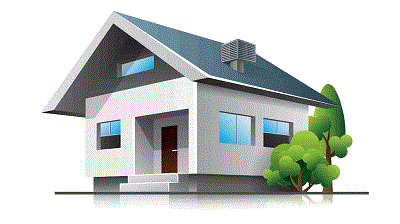 Tuesday, October 22, 2024
Tuesday, October 22, 2024  Tuesday, October 22, 2024
Tuesday, October 22, 2024 

The average temperature for June and July in Pomona, California, is in the 80s, and the building that Pablo La Roche’s office is in doesn’t have air conditioning. “But it’s still around 73 degrees inside, and very comfortable,” he said. La Roche, a professor of architecture at the California State Polytechnic University at Pomona, works out of the Lyle Center for Regenerative Studies, which was designed to use ventilation, airflow, and the natural patterns of the sun to regulate the building’s temperature. “The building becomes the air conditioner.”
It’s an approach known as bioclimatic design: using the environment around a building to passively manage the temperature and light inside, rather than mechanically heat and cool a space.
Structures designed that way are energy efficient, which leaves them with a smaller carbon footprint. Buildings contribute 40 percent to the total amount of carbon dioxide emissions in the United States. “If they were using less energy—and we could go a long way towards that with these passive structures—we could cut our emissions significantly,” La Roche said. “I think it’s incredibly important.”
Passively heating and cooling a building is far from a new idea. Early architects designing cities in the hot climates, like Morocco and Cairo, developed many of these solutions centuries ago. They built homes and buildings with natural ventilation that let air through cooling courtyards and into homes, and designed windcatchers to harness breezes. In the United States, Thomas Jefferson’s house in Virginia, Monticello, used skylights to vent hot air, and porticos to pull in cool breezes.
Click here to sign-up and receive the Weekly Round Up in your inbox every Saturday
Building with energy and the environment in mind requires an intimate understanding of local climate, and the movement of the sun and wind. La Roche loves evaporative cooling systems, which mist the air with water to trigger evaporation, which brings down the temperature. However, that only works in places that aren’t already humid. “Depending on where you are, you’ll implement different techniques,” he said. You can cool a space by closing it up during the day, and opening it up during the evening to allow night breezes in, for example, or build with materials that can suck up heat. “It’s about understanding the mechanisms,” La Roche said.
In cold climates, or the wintertime, improved insulation can offset the need for mechanical heating, Leon Glicksman, a professor of Building Technology and Mechanical Engineering at the Massachusetts Institute of Technology, told The Daily Beast. Building facades can be designed to trap heat from sunlight during the day, while also minimizing the need for artificial lights, he said.
Keep reading in The Daily Beast